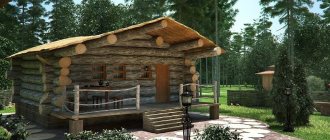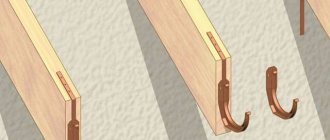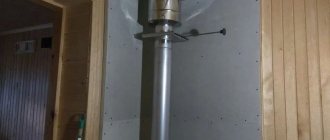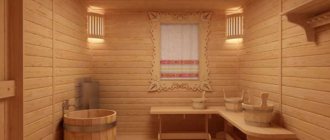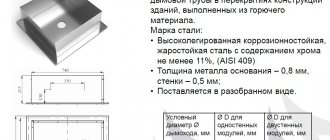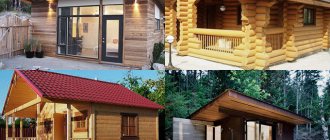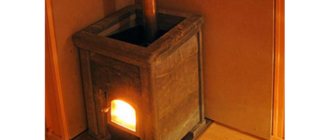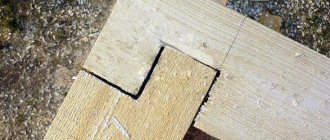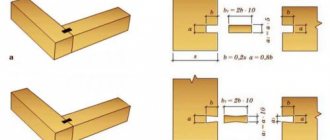Uncultivated for several years, the land gradually takes on a natural appearance, that is, it becomes more like a wild meadow, with bushes sprouting, than a place for recreation and agriculture. Any novice summer resident can face this problem.
After all, it is in this condition that plots of land cut for dachas and houses are sold for the first time; the land can end up in the same condition if no one has worked on it for at least 2-3 years. If you also become the owner of an overgrown plot and don’t know what to grab and how to achieve the desired result, choose one of five methods that have been proven over the years (and hundreds of years).
Of course, the easiest way is to hire landscape design specialists, coordinate the project and wait until they do everything themselves. But it will cost almost the same as you paid for the plot itself, so we will not offer you such a solution to the problem.
Step-by-step action plan
It will be easier to master a new area if you break the process into separate tasks and then complete them one after another. Then a clear picture will immediately form in your head - what is most important, where to start, what can be left for later.
This will relieve the state of some confusion in which owners of neglected areas often find themselves.
Pre-planning will also help to avoid annoying mistakes that can complicate the life of a summer resident and add more work to him.
The development of an overgrown area can be divided into the following stages:
- Cleaning the area.
- Removing unnecessary trees and shrubs.
- Tidying up the remaining trees and bushes.
- Weed control.
- Preparing the soil for planting.
- Keeping the soil weed-free.
Cleaning the area
First you need to clear the area of household waste. These can be rags, fragments of bottles and bricks, boards, rusty pieces of iron and other objects that have no place in the beds.
Sometimes what remains from the previous owners is a real mini-dump, disguised with weeds or lightly sprinkled with earth.
However, you shouldn’t rush to throw everything away at once. Some things can be useful on the farm, especially at first. For example, boards, old buckets, large pieces of film, etc.
Now you need to walk around the area with a strong iron rake and comb out the old grass along with fallen leaves and twigs.
Dry standing stems of large weeds can be trimmed, cut with pruning shears or mowed with a sickle. All plant debris will be useful for laying a compost heap or warm beds.
Weed control
It will not be possible to completely get rid of weeds in an overgrown area in one season. This will require at least 2 years.
Typically, neglected areas are overgrown with perennial grasses such as gooseberry, wheatgrass, sow thistle, stinging nettle, etc. Such weeds are difficult to remove; you must immediately prepare yourself for a long and persistent fight against them.
If the area is covered with annual vegetation such as woodlice, acorn grass, white goosefoot, galinsoga and chickweed, then you can rejoice. It will be much easier to deal with them.
Without the help of chemicals, it will not be possible to quickly clear an overgrown area of weeds. This is especially true for large areas.
In a small area, it is still possible to eradicate weeds by constant mowing or plowing, but this will take a lot of time.
In addition, this will need to be done every two weeks. If you act manually, then in this way you can conquer only a small space from the virgin soil. If you hire heavy equipment, it will be very expensive.
To destroy harmful perennial weeds, it is better to use continuous herbicides based on glyphosate.
These are drugs such as Tornado, Roundup, Glyphos, etc. They spray the leaves of the weeds, and then wait 2-4 weeks until the poison reaches the roots and the plants die.
During this period, they cannot be mowed or pulled out of the ground. For the drug to work, there should be no rain for the first few hours after spraying.
Generalization on the topic
Even before planning begins, you need to decide on the purpose of using the plot. It is not at all necessary to place on it all the objects that were listed in the article. If a person has a great desire to grow a large garden, he does not need to think about where to lay out flower beds and build a pond. Anyone who comes to the dacha for relaxation can refuse to plant a vegetable garden and completely dedicate the surrounding area to the implementation of any one stylistic concept of landscape design. Your own preferences are what you need to be guided by when developing a project plan.
Ratings 0
Cutting down trees and bushes
First you need to assess the condition of the trees and shrubs growing on the site and decide which of them can be left and which are better to get rid of.
First of all, you should pay attention to their age, productivity, and health status.
Their location also matters - whether they obscure a large piece of land, whether they threaten buildings, or violate the interests of neighbors.
Tall trees, for example, should be no closer than 4 m from the boundaries of the adjacent area.
It should be borne in mind that in abandoned areas the trees are usually very neglected. Their restoration is a complex and long process. So sometimes it’s easier to plant new seedlings than to tidy up old plantings.
New areas often grow wild trees like pine or birch, which sometimes you want to leave for beauty. However, it is worth considering that many cultivated plants cannot develop normally near them.
It is important to remember that to remove trees, even on your own property, you may need a felling ticket, i.e., official permission for this procedure.
After cutting down trees and shrubs, stumps remain, which take up valuable space and spoil the appearance of the site. You can get rid of them in different ways:
- With the mechanical method, the stump is first dug up to expose as many roots as possible. They can also be released from the ground using a strong stream of water. Then the roots are cut off. After this, the stump is uprooted using a crowbar, a shovel or a hired bulldozer.
- With the chemical method, a fresh cut of the stump is treated with a herbicide. Its roots die and eventually decompose themselves. Such a stump will not sprout, and after 1–2 years it can be easily pulled out of the ground.
- With the biological method, the stump is not uprooted, but honey mushrooms are grown on it. To do this, several holes are made in it and pieces of mycelium brought from the forest are placed there. Then it is watered regularly, and after a few months the harvest is harvested. In a few years, the stump itself will turn into dust.
Advice from experienced gardeners
To make work on removing weeds from an overgrown area more effective, you should use the advice of experienced gardeners:
- Avoid using fresh manure. This organic fertilizer contains a large number of weed seeds. If the composition is allowed to rot for a year, it will become very hot during decomposition, and all weed seeds will die.
- Weeds love emptiness. It is necessary to plant all the free space of the site with cultivated plants, then weeds will have nowhere to grow.
- Compaction of plantings. Plants should grow densely, but not crowded.
- Regular pruning of the above-ground parts of weeds. The roots of pest plants will use up their entire supply of nutrients and die.
- Processing beds with a pitchfork. When working with a shovel, you can cut the large rhizome of the weed, and from all its parts numerous shoots will soon appear.
- Weeding by hand. Many plant pests grow from the top of the root. If you cut it down while working with a hoe, a branched bush with several stems and a large number of seeds will grow from this place.
- Application of drip irrigation. Weeds also need moisture. If you water cultivated plants carefully at the very roots, so that the water does not spill over the entire area, the weeds will dry out. For the same reason, it is not recommended to use a hose to water plants.
Improvement of trees and bushes
It’s quite easy to tidy up neglected shrubs. First you need to get rid of all dry and damaged branches.
Then, following the pruning rules for each crop, shorten or completely remove some of the shoots. All this can be done in one season.
Many types of shrubs can be rejuvenated by simply cutting them back to 2/3 of their height or even more. This can be done with gooseberries, honeysuckle, currants, shadberry, and viburnum. All bushes must be well fed.
Neglected trees cannot be completely restored in one season. At first, it is enough to carry out sanitary pruning. It can be done at any time.
The main thing is that the air temperature is positive. Which branches should be deleted first:
- dry or injured;
- damaged by diseases or pests;
- hanging down to the ground;
- intertwined with each other;
- potentially dangerous to buildings and people.
More than three large branches cannot be removed at one time, as the tree will receive too many wounds and will not be able to cope with them. In the second year it is already possible to thin out and shape the crown. But overgrowth shoots can be cut out at any time.
Very often, trees on an abandoned site are affected by diseases and pests, so they need to be treated with suitable chemicals.
Over several years without proper care, the soil under the trees has become very depleted, so it needs to be well fertilized. Simultaneously with fertilizing, it is useful to shallowly loosen the soil under the crown and form a tree trunk circle.
New fence
Not only for safety you need to fence your area with a new fence, but also for the perception of the dacha. You will already get the impression not of an abandoned area, but of a complete and well-groomed territory that has owners.
Before installing the fence, clarify the boundaries so that there are no problems with neighbors in the future. To do this, invite surveyors who will make the correct markings according to the site plan.
- Author: Zimina Tatyana
Rate this article:
- 5
- 4
- 3
- 2
- 1
(8 votes, average: 3.5 out of 5)
Share with your friends!
Tillage
Only after the weeds treated with the herbicide die can you start digging the soil. Before doing this, it makes sense to walk around the area and collect stones, otherwise they will dull the working tool.
In an overgrown area, weeds leave behind turf - densely intertwined plant roots. It is impossible to cope with them with a shovel or hand cultivator.
In order to properly prepare such soil for planting, it is recommended to hire a tractor for this at least once. What are the options for cultivating land using agricultural machinery:
- First, harrow the soil with heavy disc harrows to cut the turf. After this, plow it and wrap the layer. All these terms are known to the tractor driver; he will understand what is required of him. Disking before plowing is necessary if the turf layer is very thick, and especially if it is formed by wheatgrass roots.
- First, plow the soil deeply, then cultivate it a couple of times, preferably lengthwise and crosswise. If possible, it would be a good idea to remove weed roots from the soil immediately after plowing. If this was not possible, then you will have to clean the cultivator of them while using it.
If you don’t want to hire a tractor, you can dig up the area yourself with a middle-class walk-behind tractor, always deep and turning over the turf.
True, in this case it will be almost impossible to pick out weed roots from the ground, since the walk-behind tractor will break them into small pieces.
It is impossible to cultivate the soil after many years of thickets of weeds with an electric cultivator. First it needs to be plowed with a tractor.
After digging, the soil must be leveled. For this purpose, disking or cultivation is carried out over a large area. In a small area, this task can be done manually - cut off the mounds with a shovel, fill in the holes, and then go over with a rake.
Despite popular belief, land that has not been cultivated for a long time does not always produce a good harvest. Firstly, it is not necessarily fertile. Secondly, for several years, harmful substances released by weed roots accumulated in it.
These toxins inhibit other plants, and as a result, the harvest is often poor in the first year. Organic fertilizers help decompose these harmful substances and also enrich the soil. So it makes sense to add organic matter at the same time as digging.
Application of non-woven covering materials
If you need to free up a small piece of land and have at least a season left, you can use covering materials. The simplest and most effective are black non-woven covering materials - they are laid out on the site in the spring, choosing the most dense ones. Over the summer, the weeds will die under the geotextile, and at the end of the season it will be possible to plow the soil and apply fertilizers in order to begin processing in the spring.
Of course, the weed seeds will not disappear over the course of the year and will continue to sprout, but there will be significantly fewer of them.
You can replace geotextiles with any dense biodegradable material, for example, corrugated cardboard. It will serve the same, although it will look less presentable.
- Covering material for beds, greenhouses and greenhouses - which one is better to choose
How to choose a good covering material, and what exactly does your planting need? Let's explore the variety of colors and textures together!
If you are in a hurry and want to plant the first vegetables and berries this year, then install the frame directly on a layer of cardboard, fill it with fertile soil, brought to order or available to you, and then plant herbs, vegetables, strawberries in these ridge boxes etc. In a couple of years, the cardboard at the base of the ridge will decompose without a trace. But the covering material is not suitable for this; it will have to be removed in the fall.

